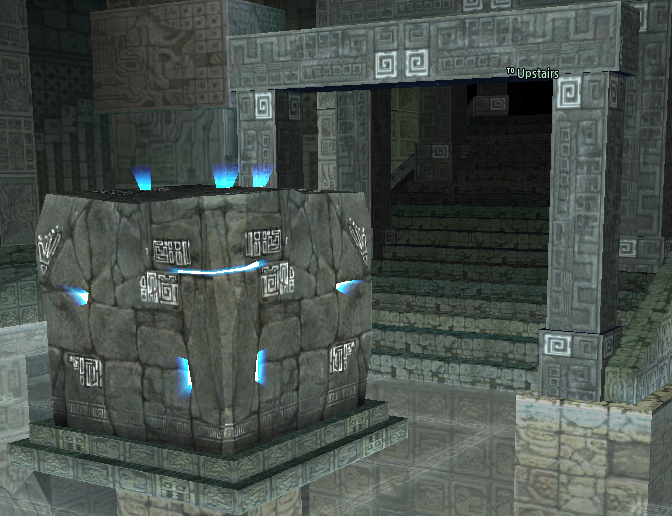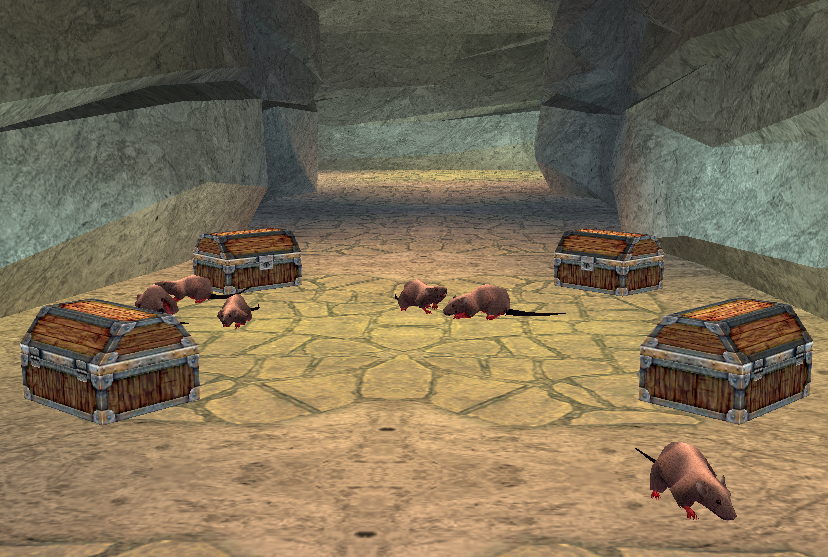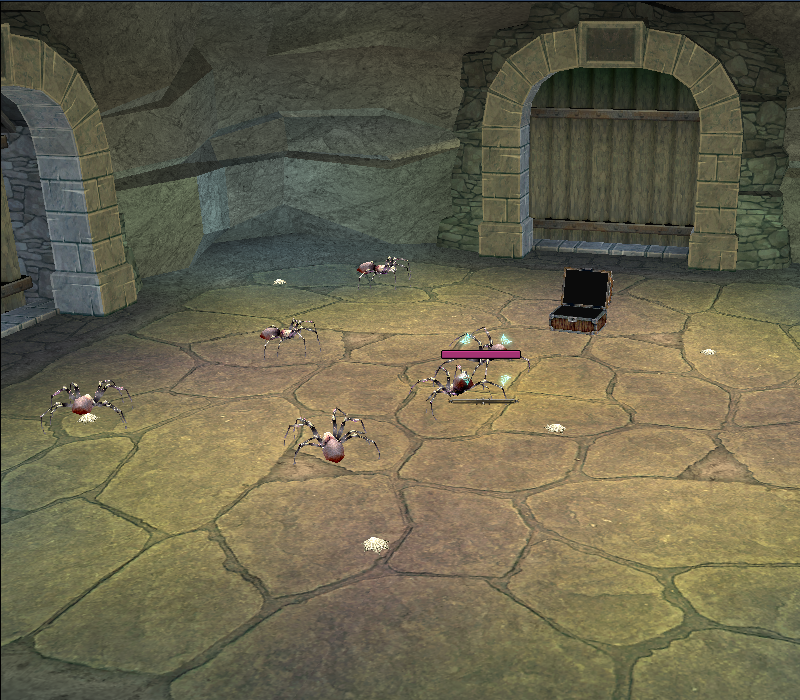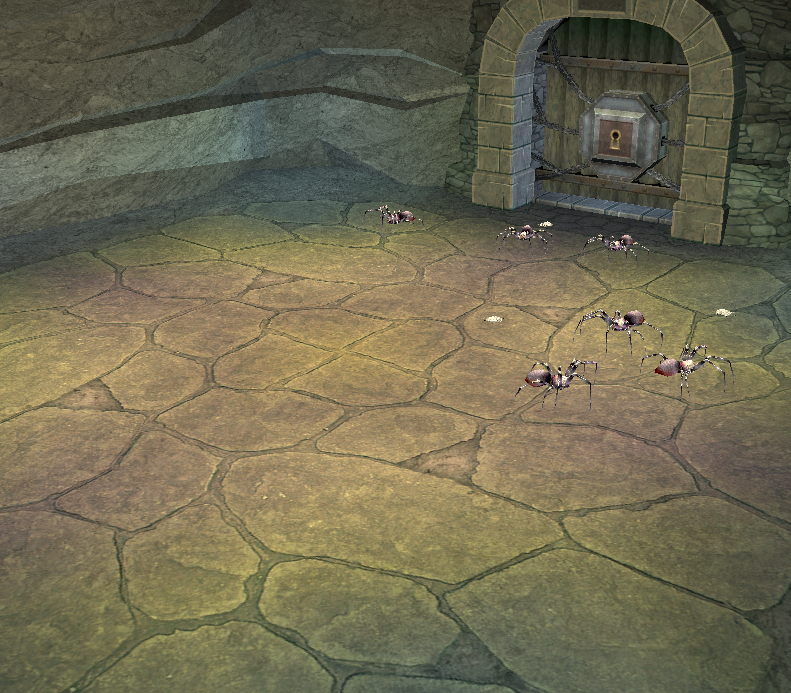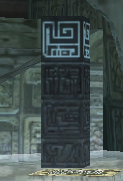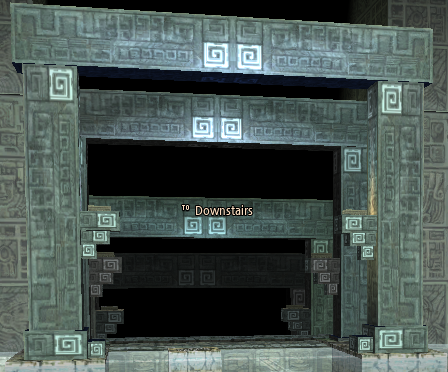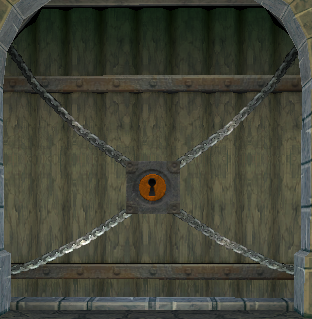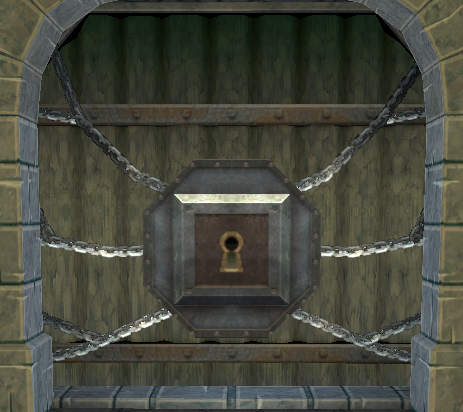Mabinogi World Wiki is brought to you by Coty C., 808idiotz, our other patrons, and contributors like you!!
Keep this wiki going by contributing to our Patreon!
User:Librarian/Dungeon Overview
Dungeon Name
A dungeon name is tied to a particular location, but there are usually multiple dungeons at that location. For example Alby Dungeon is located in Northern Tir Chonaill. At that location one can enter many different dungeons, such as Alby Normal, Alby Basic, Alby Intermediate and Alby Advanced. Depending on context, a reference to "dungeon" might mean the location, such as Alby Dungeon, or one of the dungeons accessible at that location, such as Alby Intermediate. Thus Alby Intermediate might be called a dungeon, but might be called a version or level of Alby Dungeon.
Currently the wiki has a single page for each location, such as Alby Dungeon, listing all the dungeons available at that location. This has resulted in a some very long pages, so there is a proposal to split each dungeon at that location into its own page.
Words used to indicate a dungeon's level of difficulty are Beginner (Alby and Ciar only), Normal, Basic, Intermediate, Advanced, Veteran and Abyss (Coill and Peaca only). These are mostly in increasing order of difficulty. The exception is Normal, which for some dungeons can be harder than Basic.
Dungeon Instance
Dungeons are instanced. For example, each time a new party enters Alby Intermediate, the server creates a new copy of the Alby Intermediate dungeon for that party. Thus at a point in time the server may be keeping track of say 10 different copies of Alby Intermediate for 10 different parties, all running independently of each other.
(The word instance comes from Object Oriented Programming, where a programmer can defined the properties and methods of an object, and then create instances of that object.)
Drop Items
Entry to the dungeon requires an appropriate "drop item". Early in the game's history, the item had to be physically dropped. Now there are other ways to use the item that don't involve dropping, so perhaps it should be called a "dungeon entry item" but the name "drop item" is now ingrained in the game's culture.
The wiki page for each dungeon lists the drop item for each version of that dungeon. The drop items include:
- A fomor pass for a particular version of a dungeon. Examples include the Alby Basic Fomor Pass and Alby Intermediate Fomor Pass.
- A generic pass allowing entry to a range of dungeons. An example is the Unrestricted Dungeon Pass that can give access to the Basic, Intermediate or Advanced version of any Uladh dungeon.
- Where a version of a dungeon is part of a chain of quests, the drop item will usually be an item that had to be obtained in an earlier quest in that chain.
- For the "Normal" version of Uladh dungeons, the drop item is usually described as "Any item", which really means most common items, but not any of the items covered by the previous 3 bullet points. Common choices are 1 Gold and low value potions. If there is an instance of the dungeon active that used the same drop item as you, you will be added to that instance. This may speed your progress, since other players may have already cleared the earlier parts of the dungeon, but you will not receive a key to open a treasure chest in the dungeon exit room. Players seeking to use this short cut, or players who are happy for others to join their instance, will usually use 1 Gold as the drop item.
Dungeon Keys
Dungeons contain locked doors which can be opened by a key of the same colour as the lock. Keys may be hidden in treasure chests or may be held by one of the monsters in the dungeon and become available when that monster is knocked unconscious.
Historically, a player would have to manually pick up a key that was revealed when a treasure chest was opened or was dropped by a monster. Then that particular player would need to open the corresponding locked door, or drop the key for another member in the party to pick it up and use it. When playing through a dungeon in a party, this could delay the party's progress.
Since the 7-Oct-2021 dungeon update, players no longer need to pick up keys. Now, when a treasure chest containing a key is opened or a monster drops a key, all players on that floor of the dungeon are magically given a copy of that key, no matter how far away they are from where the key was revealed. When a player uses a key to open a door, the key disappears from the inventories of all players in the dungeon. These keys are stored in a special inventory, so don't take up space in the player's normal inventory.
Dungeon Structure Overview
A dungeon contains:
- The dungeon lobby
- The instance dungeon lobby
- One or more floors
Dungeon Lobby
There is a single lobby per location. For example, there is one Alby Dungeon lobby, and at that location it is possible create a new instance of any Alby dungeon, for example the Alby Basic dungeon, and enter that instance. In the lobby, the player may encounter other players who are looking for a party to attempt any of the Alby dungeons.
The dungeon lobby contains a statue. (More information is at Dungeon Altar.) For Uladh dungeons, the statue is a statue of the goddess, and there is a platform in front of the statue. For Iria dungeons, the statue varies by dungeon and there is no platform.
In Alby, Ciar and Rundal dungeons, the wall behind the statue of the goddess can be clicked to gain access to the dungeon lobby of the corresponding Hard Mode Dungeon.
If you are attempting the dungeon solo, or if you are the leader of a party, you create a dungeon instance and progress to the instance dungeon lobby by one of the following actions. (For a normal Uladh dungeon, depending on the drop item, you may join an existing instance instead of creating a new instance.)
- Open your inventory, pick up an appropriate drop item and click on the statue.
- Click on the statue. This will open your inventory and highlight drop items which may be used. Click on an item to use it. However, this method does not highlight gold bags, so if you want to use 1 gold as the drop item, move 1 gold out of your gold bags before clicking the statue, and then you can click that 1 gold.
- In Uladh dungeons, stand on the platform in front of the statue of the goddess and drop an item from your inventory.
Instance Dungeon Lobby
For most Uladh dungeons, the instance dungeon looks similar to the dungeon lobby, though the lighting colour is different, presumably to give a clear visual cue that something has changed. Functionally, the two key differences relative to the dungeon lobby are:
- The wall immediately behind the statue is replaced by an open doorway displaying the text "Downstairs". Click on that to go to floor 1 of the dungeon.
- Clicking on the statue of the goddess will open a dialog asking you whether you want to leave the dungeon, meaning leave this dungeon instance and return to the dungeon lobby.
For other Uladh dungeons and all Iria dungeons, the instance dungeon lobbies differ by dungeon and they bear no resemblance to their dungeon lobby. However, they do all contain the same two options as above. That is:
- There will be an open route, either a doorway or a hole in the floor, labelled "downstairs", which will take you to floor 1 of the dungeon.
- There will be an object in the room which you can click to leave the dungeon instance.
When the game was originally released, the only dungeons were inside caves and the word "downstairs" made sense. However, it is still in use throughout the dungeon system, even in Fiodh Dungeon which is outdoors and apparently all on one level.
When you enter the instance dungeon lobby, a message will appear at the top of your screen listing all the people in the dungeon. For most dungeons, this just lists everyone in your party. For Normal level Uladh dungeons, it can be informative if your drop item caused you to enter an existing instance.
The purpose of the Instance Dungeon Lobby is unclear. Logically, the dungeon could still function if the instance dungeon lobby was removed, allowing players to go directly from the dungeon lobby to floor 1 of the instance. (Shadow missions are also instanced, and take players directly from the relevant stonehenge to the instanced shadow mission, without any intervening room.)
Floors
Historically, dungeons have contained up to 5 floors, but more recently most dungeons have been simplified and the current maximum seems to be 3 floors.
- Most Ulaid Basic, Intermediate and Advanced dungeons have 1 floor.
- The exceptions are hard mode dungeons and Peaca Intermediate dungeon, which are 2 floors.
- There is no simple summary for other dungeons. Consult each dungeons wiki page.
Dungeon Floor Structure
Each floor consists of square rooms joined by narrower corridors.
The floor topology is a tree structure. That is, the map of the floor cannot contain any closed loops. In other words, if you start at Point A, you can never find a route that passes through various rooms and/or corridors before returning to point A, without retracing your steps.
In most dungeons, some corridors lead to a dead end. In some of these dungeons, these dead ends contain chests that hold items such as gold or potions.
When a dungeon contains only 1 floor, the rooms can be divided into
- The floor foyer
- Many regular sized dungeon rooms
- The boss room
- The dungeon exit room.
When a dungeon has more than one floor, the last floor will follow the above structure, and all earlier floors will contain
- The floor foyer
- Many regular sized dungeon rooms
- The floor exit room
The Floor Foyer
This is a small room at the start of each floor containing a statue similar to that encountered in the dungeon lobby. That is, for Uladh dungeons it will be a Statue of the Goddess.
Clicking the statue will produce a message stating "You have memorized this location". If you do this, and are subsequently Knocked Unconscious on this floor, you will be given an option to start again from that foyer. (Exception: This recovery option is not available in Albey Dungeon, which is different from Alby Dungeon).
Regular sized dungeon rooms
Within a particular dungeon all these rooms are the same size, but this size can vary by dungeon. Easier dungeons tend to use larger rooms, making it easier for the player to avoid drawing the attention of multiple monsters.
These rooms may contain monsters, treasure chests and herb patches. They come in several types, described in detail at Dungeon_Room_Types
Floor exit room
This is the last room on any floor which is not the last floor of its dungeon. It is the same size as the regular sized dungeon rooms in that dungeon. It is an otherwise empty room, containing an open doorway that displays the text "Downstairs". Clicking that exits transports you to the foyer of the next floor.
Boss Room
The boss room is the 2nd last room in the final floor of a dungeon. It is roughly four times the size of a normal room. In most dungeons, opening the boss room triggers a cutscene, a short movie introducing the monsters in the boss room. These can be one or more monsters, called boss(es), far more powerful than the monsters encountered earlier in the dungeon. There may also be less powerful minions scattered in the room. Some bosses can summon further minions.
Assuming the minimap has North oriented upwards, the entrance to the boss room is always on the South side.
Dungeon Exit Room
The dungeon exit room is a small room on the North side of the boss room. It contains up to eight treasure chests and a statue.
Once the boss room has been cleared, the door to the Dungeon Exit Room will open and eligible players are awarded a Treasure Chest Key. A player is eligible for a key if:
- at the time the dungeon instance was created, they were in the party whose leader created the instance, and
- they were anywhere on the last floor of the dungeon at the time the boss room was cleared.
The number of treasure chests in the dungeon exit room will match the number of keys awarded. (Exception Alby Advanced.) Each key awarded can be used to open any treasure chest that has not yet been opened, but it can only be used once. That is, normally each eligible gets to open one treasure chest. However, unused keys can be traded between players while they are still in the dungeon, and if a player exits the dungeon without using their key, the key will drop to the floor and may be picked up by another player still in the dungeon.
Clicking the statue in the room's center will cause your character to exit the dungeon instance and warp back to the dungeon's lobby.
When all players have exited the dungeon instance, the instance will be deleted from the server, but this doesn't happen immediately. For most dungeons this delay doesn't matter since no new players can enter the instance. However, for the Normal level Uladh dungeons, where players may be added to an existing dungeon instance if they use the same drop item, it is possible to enter a dungeon which has been fully completed and which the last player only recently left. You may see this effect if you are running a Normal Uladh dungeon repeatedly, where you may find that you have just re-entered the dungeon instance you left a few seconds earlier. The most common reason for rerunning a dungeon repeatedly is to try to obtain a rare item in the final treasure chest, so being put back into an instance where the final treasure chest has already been opened is not useful. You can avoid re-entering your completed dungeon instance by:
- using a different drop item, or
- changing channels.
Minimap
In some dungeons, the minimap will display the map for the whole floor as soon as you enter the floor. In others, the minimap will only display parts of the map that your character has visited. Alternatively, the entire map may be made visible by using Awakening of Light, a Belisha, an Odd-Eye Belisha Support Puppet or Counseling Program Yui.


